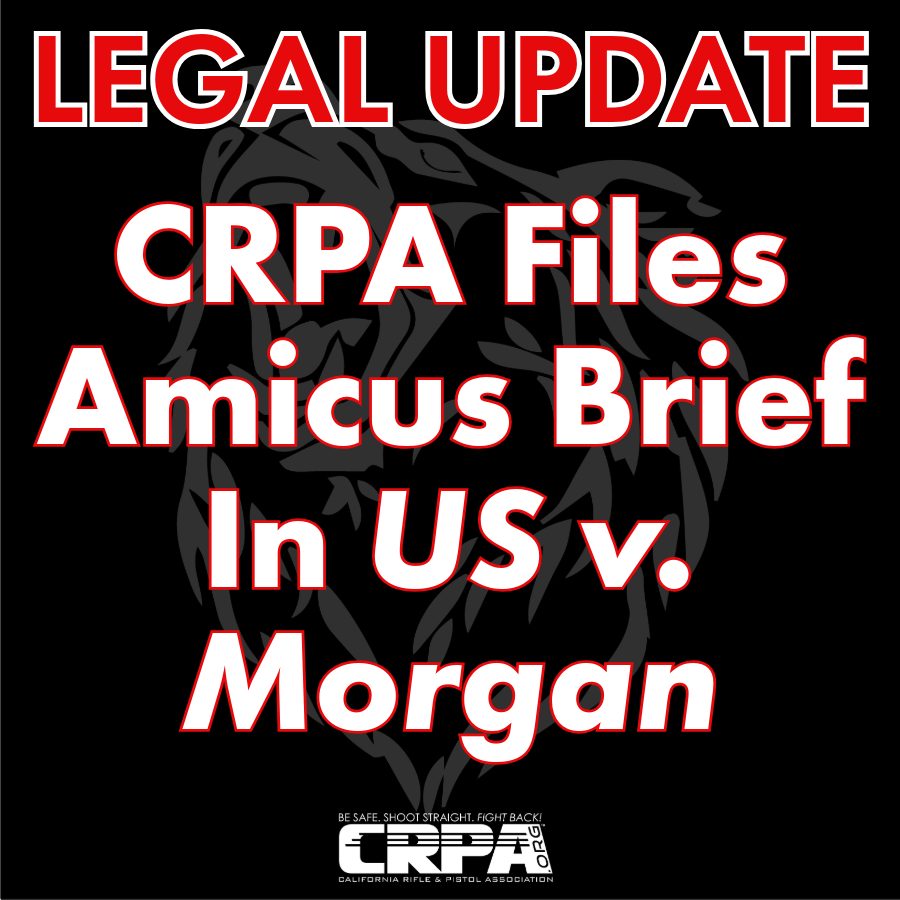CRPA Fighting For “Arms” Definition

The California Rifle & Pistol Association, Second Amendment Law Center, Gun Owners of America, Gun Owners of California, Minnesota Gun Owners Caucus, and Second Amendment Defense and Education Coalition have filed an amicus brief in US v. Morgan, a Tenth Circuit criminal case involving a dismissed machinegun possession charge. The case involves an individual charged with violating 18 U.S.C. § 922(o), which prohibits the possession or transfer of an unregistered machinegun.
The United States District Court for the District of Kansas granted Morgan’s motion to dismiss, ruling that at least some machineguns qualify as “arms” under the Second Amendment, and that the government “failed to establish that this nation’s history of gun regulation justifies the application of 18 U.S.C. § 922(o) to Defendant.” The judge noted that the government barely tried to meet its historical burden in this case, presenting only two analogs. It did not rule out that the government could meet its historical burden in some other case, but because it did not in this one, Morgan’s indictment for possessing a machinegun had to be dismissed.
Our amicus brief encourages the Tenth Circuit to affirm the District Court’s dismissal and reject the government’s efforts to damage the Bruen analysis. We argue that machineguns are indisputably bearable arms and thus fall within the plain text of the Second Amendment, and that the Court should reject the government’s arguments that because a relatively low amount of machineguns are in circulation, they should not qualify as “arms” under the plain text.
As to the historical analysis, our brief first argues that because the government barely even tried to present any historical analogues in the district court, the Tenth Circuit should stop there and affirm its ruling as to Mr. Morgan, leaving open the possibility that the government could make a different showing in some future case. But even if the Court considers the new analogues the government belatedly presents, they are insufficient because the historical laws presented only applied to concealed carry, not possession. And even assuming old bans on concealed carry of certain weapons were enough to justify modern possession bans, the sorts of weapons banned were not the prevailing firearms of the day, but rather things like daggers and brass knuckles.
Finally, while arms established to be “dangerous and unusual” may be restricted, whatever arguments the government can make to that effect for machineguns, it must be something more than their usefulness in combat. In addition to personal self-defense, our historical tradition clearly shows that a driving purpose of the Second Amendment was collective defense against foreign invaders or tyrannical usurpers. Combat arms are well-suited to that purpose and can’t be banned simply for being combat arms.
